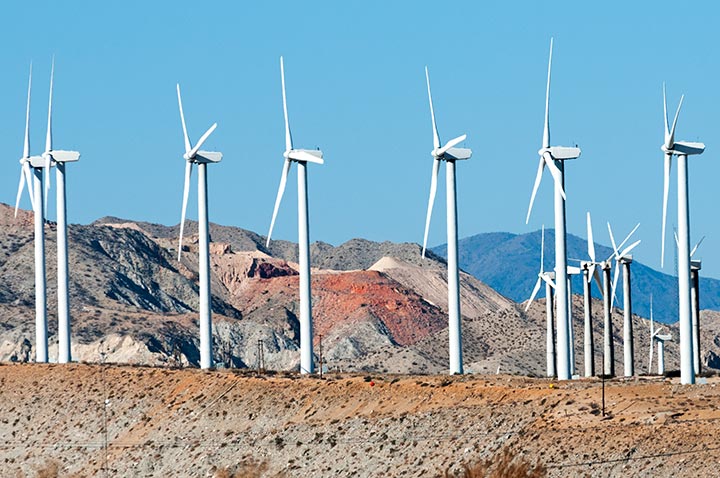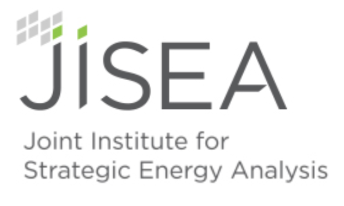Renewables in Mining: Rethinking How Energy Is Generated and Used

Photo courtesy of iStock.
July 15, 2020—Mining is one of the most energy-intensive industries in the world, as well as a major source of raw materials. Many mines heavily depend on fossil fuels for energy, which constitutes 15%–40% of total operating costs.
With demand for raw materials expected to increase, so will energy usage and therefore costs. At the same time, mines face growing pressure to decarbonize, and customers are wanting sustainably sourced raw materials.
All these factors—economic, societal, and environmental—are motivating mines to reconsider how they generate and use energy to drive down costs and curtail emissions. JISEA hosted a workshop with mining industry professionals last fall that showed a pervasive and growing interest among miners to shift away from fossil fuels.
Insights gained from the workshop informed the newly released report Integrating Clean Energy in Mining Operations: Opportunities, Challenges, and Enabling Approaches. In this report, JISEA analysts Tsisilile (Tisi) Igogo, Travis Lowder, and Jill Engel-Cox in collaboration with Alexandra Newman from Colorado School of Mines and Kwame Awuah-Offei from Missouri University of Science and Technology propose that renewable energy integration into mining operations can address some of the pressures the industry is facing.
Renewables can help mines decarbonize operations, improve operating margins, and also hedge against risks associated with energy prices and fossil fuel volatility. Renewable technologies can be integrated into extraction, processing, and refining phases of mineral production.
But it's not just a question of installing PV arrays or wind turbines—realizing the true potential of renewables in mining requires rethinking how energy is generated and used at mines.
Electricity Demand
Mining operations require significant and constant quantities of energy, often 24 hours a day, 7 days a week. Many mining processes, like reducing rock sizes, heavily depend on electricity. Many of these activities can be powered with on-site renewables, helping to displace fuel oil, diesel, and coal.
Renewable energy technologies such as wind and solar have recently become the cheapest source of power in many parts of the world, and capital costs for these also continue to fall. In addition, renewables can be helpful for mines given their remote locations. Currently, wind power in the Arctic of northern Canada and solar power in the Outback of Australia and West Africa are serving facilities.
Technical Considerations: To cover hours of off-peak mine operations, battery energy storage will be needed. Currently, lithium ion batteries do not support longer hours of storage, so renewable technologies may not be able to meet all of mines’ energy needs. For some mines, offsetting 3%–40% of total electricity demand with renewables is the economic sweet spot. In addition, not all mine locations have suitable terrain for solar PV or wind turbine installation.
Heat and Transportation
Process heat demand—ranging from low- to high-temperature—is one of the major energy consumers in mining. Currently, industrial heat requirements are generally fulfilled by fossil fuels. Some of this demand could be attained by a combination of renewables plus electrification.
Material handling is also one of the most energy-intensive activities in mining and needs to be addressed for the mining industry to decrease its carbon footprint. Instead of using diesel fuel, mines can use battery-powered and biodiesel trucks, and hydrogen-powered haulage. Using electric trolly-assist could decrease fossil fuel use and offset ventilation costs.
Technical Considerations: Most existing renewable energy technologies cannot attain temperature requirement above 800°C, which is needed for things like steel production. Currently, biomass is the only commercially available renewable solution for high-temperature heat in excess of 550°C. Concentrated Solar Power (CSP) technology is showing promising results but will require larger land availability and sufficient solar resources. The Heliogen Lancaster California experimental CSP facility has demonstrated temperatures in excess of 1,000°C. A system like this could work for some high-temperature mining operations once it advances from the research phase.
Table 4. Maximum Temperature Supported by Existing Renewable Technologies
| Category | Technology Type | Temperature Levels |
|---|---|---|
| Renewable source | Biomass, boiler | Low |
| Biomass, high-temperature | Medium | |
| Biomass, CHP | High | |
| Biogas, anaerobic digesion | Low | |
| Solar PV | Low | |
| CSP | High | |
| Wind | Low | |
| Heat Pump | Low | |
| Geothermal direct use | Low | |
| Deep geothermal | Medium | |
| Energy storage | Solar thermal | N/A |
| Hydrogen | N/A | |
| Pump storage | N/A | |
| Battery storage | N/A |
*High-temperature heat production using solar and wind beyond 550°C is not yet commercially offered and is still in the demonstration phase at research facilities
Feedstock Demand
Coal and natural gas currently make up most feedstocks in the mining industry. Renewable sources could supply 20%–30% of this feedstock demand for industrial minerals processing. For example, biomass and clean hydrogen produced by renewables could be used in place of coal and natural gas in iron and steel making.
Technical Considerations: While biomass does present an alternative feedstock opportunity, production and transport costs, along with technical aspects of using charcoal, introduce challenges. In addition, clean hydrogen at the scale required by the industry is still expensive. More investment in research and development is needed to help produce economically feasible low-emissions feedstocks.
Production of Clean Hydrogen
Hydrogen has many uses in mining industry. It can serve as a feedstock, be used as a fuel for transportation, or be a source of high-temperature heat, power, and storage. At present, hydrogen is largely produced from natural gas, coal, and oil. However, onsite electrolysis could allow mining companies to produce hydrogen from excess wind and solar generation.
Technical Considerations: Clean production of hydrogen today is largely uneconomical. In addition to research and development, government policies can help in innovation of clean hydrogen technologies, stimulating commercial demand, building infrastructure, and reducing cost.
Where To Go from Here
The mining industry is unique. Analysis and industry insights show renewables integration is complicated and presents several technical issues that need further exploration. It may not be possible to entirely replace fossil fuels with renewables today, but there are near-term solutions for integration that can scale up.
The analysts identify four priorities for renewables integration and a clean energy future for mines: align energy and mining business models; advance skills and knowledge of renewables within the mining industry; continue research and development on the biggest technical issues like achieving high-temperatures with renewables and alternative feedstocks; and government policy and regulation to institute and advocate for clean energy.
JISEA is putting together a consortium of companies and organizations to collaborate on high-priority topics. If you're interested in joining the consortium on clean energy and mining, please contact us.
This study was led by Tsisilile (Tisi) Igogo and Travis Lowder from the National Renewable Energy Laboratory.
For more information, see the full report.
Back to JISEA News >
